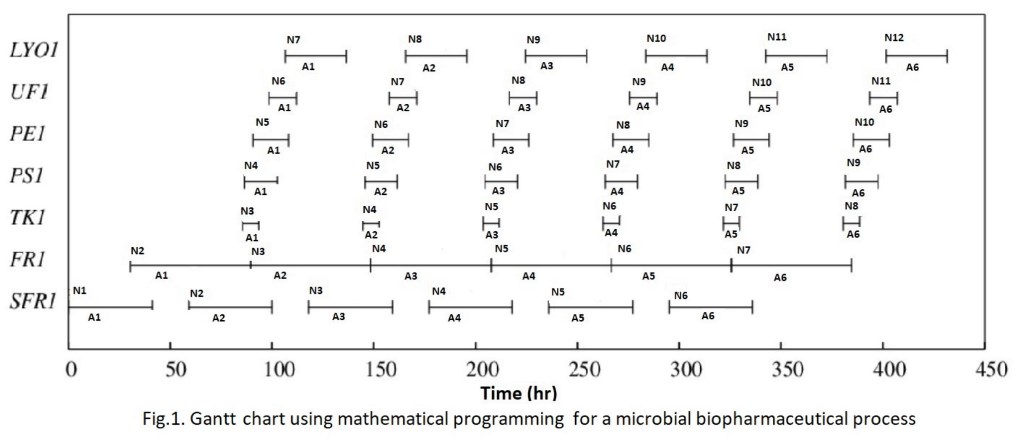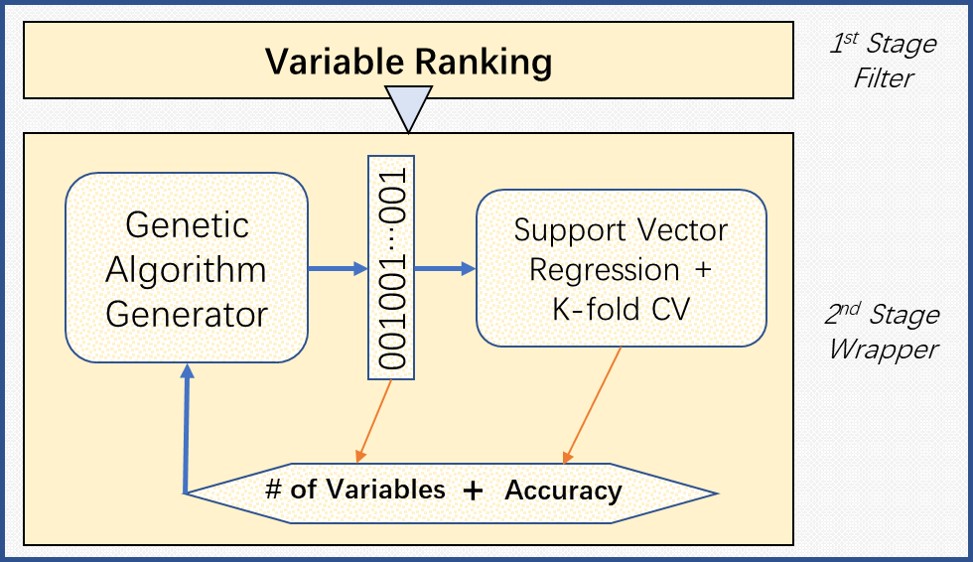
The trade of LNG is usually regulated by contracts between suppliers and buyers which are generally 20-25 years long and provide security to buyers; however, their rigid take-or-pay clause transfers risk of surplus volume to the buyer. New suppliers have emerged due to liberalisation in local markets. The concomitant emergence of new small-scale customers has led to a competitive LNG market characterized by high demand variability. Consequently, there is an increased need felt by regasification terminals to purchase LNG through spot (i.e., short term) contracts. In this study, we seek to quantify the relative benefits of shifting from long term contracts to purchasing LNG on the spot market.
In this paper, we consider procurement of LNG by a buyer with its own demand variability and a set of producers each with its own selling cost. This collective demand may be met through either a long-term contract or through spot market purchase. Our goal is to identify critical conditions under which spot purchases are superior to long-term contracts and vice versa. Towards this, we develop MILP models to assess the minimal procurement cost i.e. sum of transportation cost and LNG price , taking into the account the dynamics of producers, shipping, and buyers. The set of producers is modelled with each producer having specific production profile along with storage tank and berth capacities and selling price associated with it. Similarly, a buyer is modelled with its varying demand over the planning horizon. The voyage of the LNG carrier is modelled as being dependent solely based on demand at consumption sites. Minimal procurement costs based on long term and short term contracts are calculated using these models and compared in this study. The results of the paper can be used to develop critical insights about the benefits of different LNG procurement contracts.
The nitrogen expander and single mixed refrigerant (SMR) liquefaction processes are recognized as the most favorable options to produce liquefied natural gas (LNG) at offshore sites. These processes have a simple and compact design that make them capital costs efficient. Nevertheless, huge operating costs, mainly due to the lower energy efficiency is an ongoing issue, so far. This lower energy efficiency is primarily due to the entropy generation that is dependent on the temperature gradients inside the main LNG cryogenic heat exchanger. The temperature gradients inside the cryogenic exchanger are strongly dependent on the refrigerant flow rates and pressures of refrigeration cycles. However, there are highly non-linear interactions between process decision variables and constrained overall energy consumption. Therefore, optimization of the LNG processes is still a challenging task in order to find optimal values of decision variables corresponding to minimize energy consumption. In this context, this study examines algorithm-specific parameter-less optimization methodology naming as “Jaya” to improve the energy efficiency of LNG processes for offshore applications. It was found that using the Jaya algorithm, the energy efficiency of SMR process and nitrogen dual expander liquefaction process can be enhanced up to 14.3% and 11.63%, respectively, as compared to their respective bases cases. This research was supported by the Basic Science Research Program Foundation of Korea (NRF) funded by the Ministry of Education (2018R1A2B6001566) and the Priority Research Centers Program through the National Research Foundation of Korea (NRF) funded by the Ministry of Education (2014R1A6A1031189).
Biopharmaceuticals are therapeutic drugs driven from biological means such as monoclonal antibodies, engineered protein hormones, cytokines and vaccines. As the biopharmaceutical sector has matured, pressure is increasing for design of flexible process configurations that can cope up process variability associated with the manufacturing of biopharmaceuticals. Due to biological nature of the reactants, it is challenging to maintain required purity of final product and other quality control measures. Under the risk of high clinical failure linked to drug development coupled with greater process variability, design of decision support system for multi-product facilities in biopharma remains a challenge. A lot of work has been done towards planning, scheduling and optimization in process system engineering (PSE), and recently increasing efforts are being made to understand process design and optimization in biopharmaceutical industry. Therefore, the purpose of present study is to conduct research and develop novel models to fill the gap between computer aided process design tools and mathematical optimization and scheduling. In the present work an attempt is made to compare process scheduling using mathematical programming versus conventional software tools such as SchedulePro®[1] to explore techno-economic benefits, if any. An example adopted from SchedulePro® library, on a microbial biopharmaceutical process, has been modelled and validated using mathematical programming based approaches [2]. The Gantt chart is given in Fig.1. Another case study from a process for Lethal Toxin Neutralizing Factor (LTNF) production from E.coli, for the treatment of snakebite, has also been considered for validation of the proposed model.
References
[1] SchedulePro® software, Intelligen, Inc., USA: http://intelligen.com/schedulepro_overview.html
[2] M.A. Shaik; A. Dhakre; N. Patil; A.S. Rathore, Capacity optimization and scheduling of a multiproduct manufacturing facility for biotech. therapeutic products, Biotechnol. Prog., vol. 30, no. 5, pp. 1221-1230, 2014.

Recently, lignocellulosic biomass have emerged as a renewable energy source due to reduce environmental pollution with carbon-neutral fuel. However the storage problem due to weak water-resistance and which has a disadvantage of low heating value compared to fossil fuels. In order to overcome this problem pretreatment process (crushing, crushing, compression molding, carbonization, torrefaction) are required and in this study torrefaction was selected. Removal of moisture content through the torrefaction process increases energy per unit weight, which has advantages for storage, transportation and finally improves fuel properties. But if the process time was too short, heating value can't be increased, on the other hands, the useful heating value can be decreased caused by long processing time. So proper conditions were needed. In this study, the development of heat value one-dimensional prediction model for optimization of the torrefaction process was performed. A comparative analysis was conducted with the results of torrefaction experiments (200, 230, 270 °C, 20, 30, 40 min). Steuer's heating value estimation equation (r2 = 0.937, RMSE = 11.664) was selected as the most suitable empirical formula. Finally, derive the optimal torrefaction condition, according to the process conditions through case study.
Fluid catalytic cracking (FCC) is one of the most critical thermal conversion processes in refineries, and the modeling of FCC process is a useful tool to investigate, simulate, and optimize this complex industrial process. The selection of key variables in FCC process modeling mainly relies on the design handbooks or operating experience. However, the causal relationship between modeling variables and target variables may vary over time owing to the changing operating conditions, flexible feedstocks and some other issues occurred under uncertainty. It is essential to analyze the key variables that have an impact on the target variable in real time. A filter-wrapper hybrid feature selection strategy is proposed in our work to find out the key variables in an FCC process with respect to certain target variables. In the filter stage, the irrelevant variables are screened out by the ReliefF algorithm from the dataset that contains 445 candidate variables. Next, in the wrapper stage, the genetic algorithm (GA) is used to generate a large number of subsets, and the support vector regression (SVR) is carried out to test the performance of different subsets with the multi-objective considering both the prediction error and the magnitude of the subset. For the demonstration purpose, the process variable like the pressure of reactor and product indices like gasoline yield, diesel yield are chosen as the targets. The results indicate that the hybrid strategy can reduce the magnitude of subset over 92% within 30 mins by which it suggests the potential for implementation in industrial scenarios.

Salts are generally prepared by acid–base reaction in relatively large volumes of organic solvents, followed by crystallization. In this study, the potential for preparing a pharmaceutical salt between haloperidol and maleic acid by a novel solvent-free method using a twin-screw melt extruder was investigated. The pH–solubility relationship between haloperidol and maleic acid in aqueous medium was first determined, which demonstrated that 1:1 salt formation between them was feasible(pHmax 4.8; salt solubility 4.7 mg/mL). Extrusion of a 1:1 mixture of haloperidol and maleic acid at the extruder barrel temperature of 60 °C resulted in the formation of a highly crystalline salt. The effects of operating temperature and screw configuration on salt formation were also investigated, and those two were identified as key processing parameters. Salts were also prepared by solution crystallization from ethyl acetate, liquid-assisted grinding, and heat-assisted grinding and compared with those obtained by melt extrusion by using DSC, PXRD, TGA, and optical microscopy. While similar salts were obtained by all methods, both melt extrusion and solution crystallization yielded highly crystalline materials with identical enthalpies of melting. During the pH-solubility study, a salt hydrate form was also identified, which, upon heating, converted to anhydrate similar to that obtained by other methods. There were previous reports of the formation of cocrystals, but not salts, by melt extrusion. 1H NMR and single-crystal X-ray diffraction confirmed that a salt was indeed formed in the present study. The haloperidol–maleic acid salt obtained was nonhygroscopic in the moisture sorption study and converted to the hydrate form only upon mixing with water. Thus, we are reporting for the first time a relatively simple and solvent-free twin-screw melt extrusion method for the preparation of a pharmaceutical salt that provides material comparable to that obtained by solution crystallization and is amenable to continuous manufacturing and easy scale up.